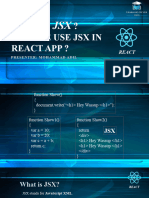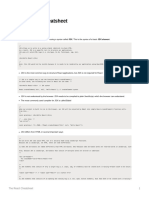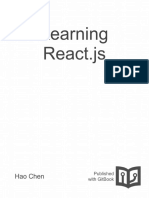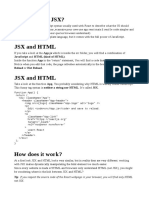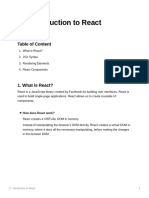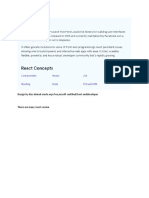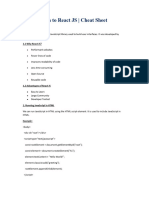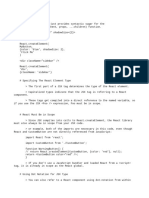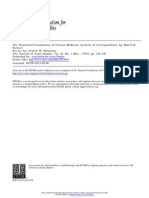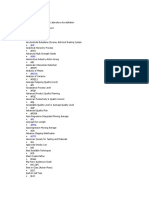0% found this document useful (0 votes)
44 views4 pagesReact JSX
JSX, or JavaScript XML, allows developers to write HTML-like syntax within JavaScript, making it easier to create React applications. It follows XML rules, requires a single top-level element, and uses 'className' instead of 'class' due to JavaScript's reserved keywords. JSX expressions can include JavaScript variables and must be properly closed to avoid errors.
Uploaded by
jayamala.vernekarCopyright
© © All Rights Reserved
We take content rights seriously. If you suspect this is your content, claim it here.
Available Formats
Download as DOCX, PDF, TXT or read online on Scribd
0% found this document useful (0 votes)
44 views4 pagesReact JSX
JSX, or JavaScript XML, allows developers to write HTML-like syntax within JavaScript, making it easier to create React applications. It follows XML rules, requires a single top-level element, and uses 'className' instead of 'class' due to JavaScript's reserved keywords. JSX expressions can include JavaScript variables and must be properly closed to avoid errors.
Uploaded by
jayamala.vernekarCopyright
© © All Rights Reserved
We take content rights seriously. If you suspect this is your content, claim it here.
Available Formats
Download as DOCX, PDF, TXT or read online on Scribd
/ 4


